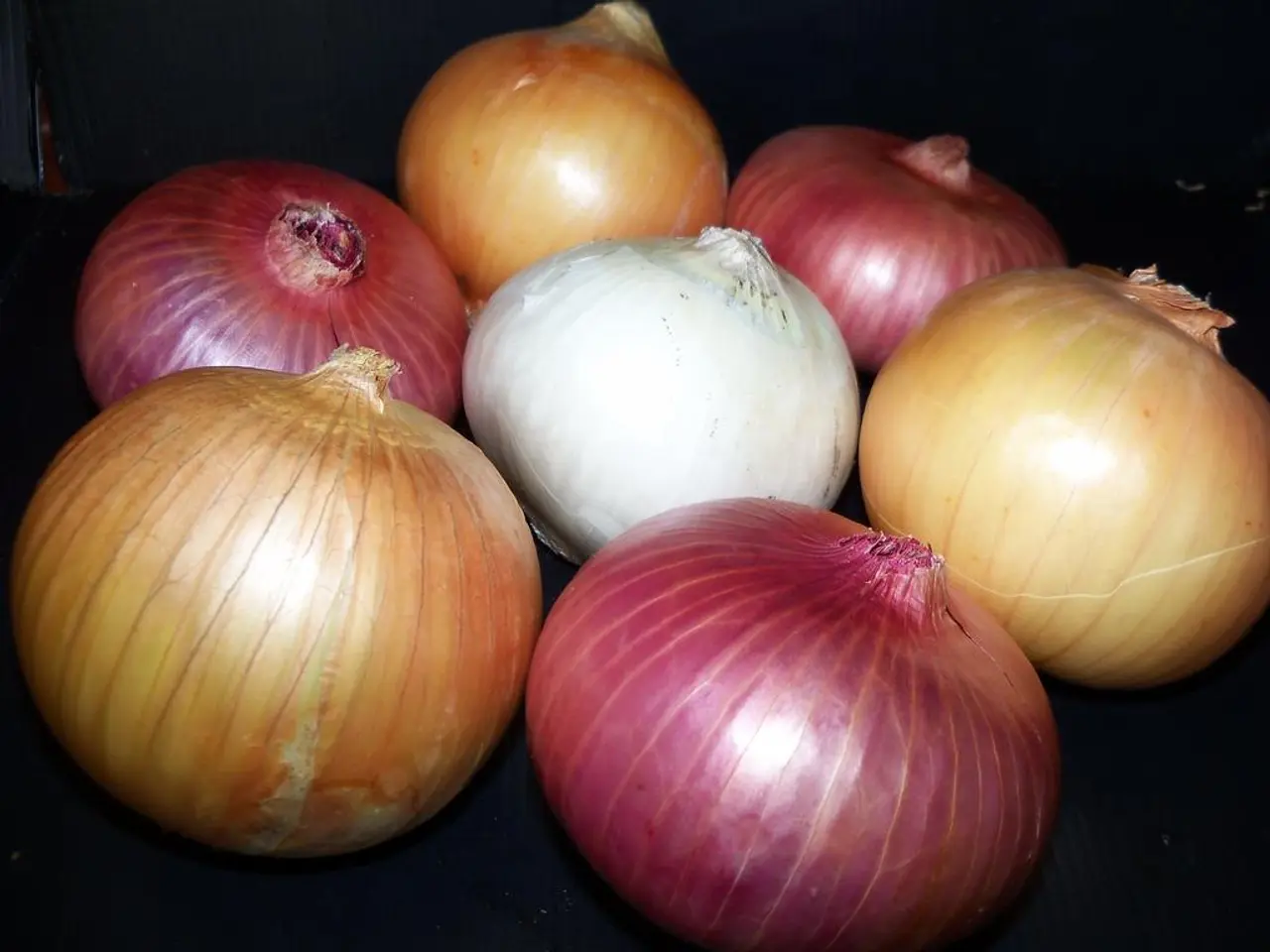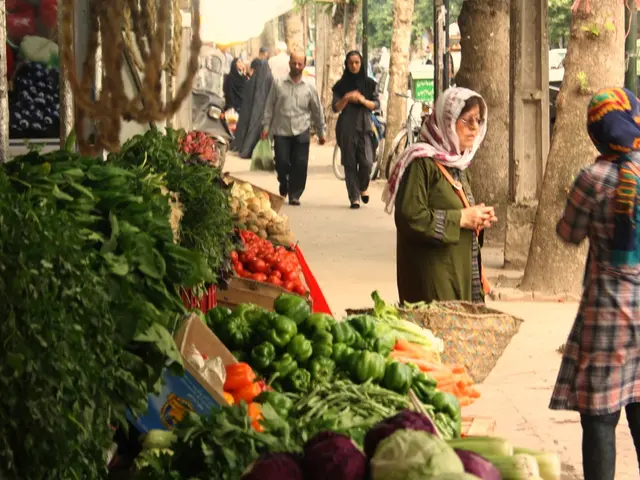Cultivating Garlic in a Personal Backyard
Garlic, a staple in many kitchens, can also thrive in Iowa gardens. Here's a guide to help you grow this versatile plant successfully.
Types of Garlic
1. Hardneck Garlic
Characterised by a central stem running through the bulb, hardneck garlic is known for its fewer, larger cloves and robust flavour. Hardneck garlic varieties, such as Porcelain, Purple-stripe, and Rocambole, are well-suited for Iowa's colder climates. These types are known for their disease resistance and can be stored for about six months.
2. Softneck Garlic
Softneck garlic, with no central stem, is easier to grow and offers more cloves per bulb. This type is the most commonly found in grocery stores. In Iowa, the Artichoke variety is popular due to its mild flavour and extended storage life of up to eight months.
3. Elephant Garlic
Though not a true garlic, elephant garlic is a variant of leek and is known for its large cloves and mild flavour. It is easier to grow and can be harvested in fewer days than regular garlic.
Growing Conditions in Iowa
Iowa's climate is suitable for both hardneck and softneck garlic, as both types can benefit from the state's cold winters for vernalization. Garlic is typically planted in the fall, around October, and harvested in late June or early July, depending on the specific variety and weather conditions.
Caring for Your Garlic
- Plant the largest cloves for the highest yields.
- Cut the stalk off as low as possible without cutting off any leaves.
- Trim off the roots and brush off any loose soil.
- Store garlic in a cool (32 to 40°F), dry (65-70% relative humidity) area in a mesh bag or open crate. Alternatively, braid the foliage together immediately after harvest, dry, and hang the braided garlic in a cool, dry location.
- Dry garlic in a warm, dry, well-ventilated location.
- Garlic grows best in well-drained, fertile soils high in organic matter and requires full sun.
- Garlic requires more fertilizer than many vegetables and needs 1 inch of water each week during dry weather.
- Harvest garlic when the foliage begins to dry, usually in July or August in Iowa. Cut off the dry foliage 1 inch above the bulbs when the tops have dried.
Suitable Cultivars
For hardneck garlic, suitable varieties for Iowa gardens include 'Asian Tempest,' 'German Red,' 'Merrifield Rocambole,' 'Music,' and 'Spanish Roja Rocambole.' For softneck garlic, 'Inchellium Red,' 'New York White,' and 'Susanville' are good choices.
When it comes to growing garlic in Iowa, the right variety can make all the difference. Choose hardy, flavourful varieties like Porcelain, Purple-stripe, and Rocambole for hardneck garlic, and Artichoke for softneck. For a milder taste and easier cultivation, consider elephant garlic. Happy planting!
- To grow garlic successfully in Iowa, it's beneficial to select suitable varieties like Asian Tempest, German Red, Merrifield Rocambole, Music, and Spanish Roja Rocambole for hardneck garlic, as well as Inchellium Red, New York White, and Susanville for softneck.
- The extended storage life of up to eight months makes the Artichoke variety of softneck garlic a popular choice in Iowa gardens.
- For those who prefer a milder flavor and easier cultivation, elephant garlic, though not a true garlic, is a good option for home-and-garden enthusiasts and those with a gardening lifestyle.
- To have a productive garlic garden, choose the largest cloves for planting and provide well-drained, fertile soils high in organic matter, full sun, and appropriate water levels with 1 inch of water each week during dry weather.
- After harvesting garlic, store the bulbs in a cool, dry area (32 to 40°F, 65-70% relative humidity) in a mesh bag or open crate, or braid the foliage together, dry, and hang the braided garlic in a cool, dry location for long-term preservation.




